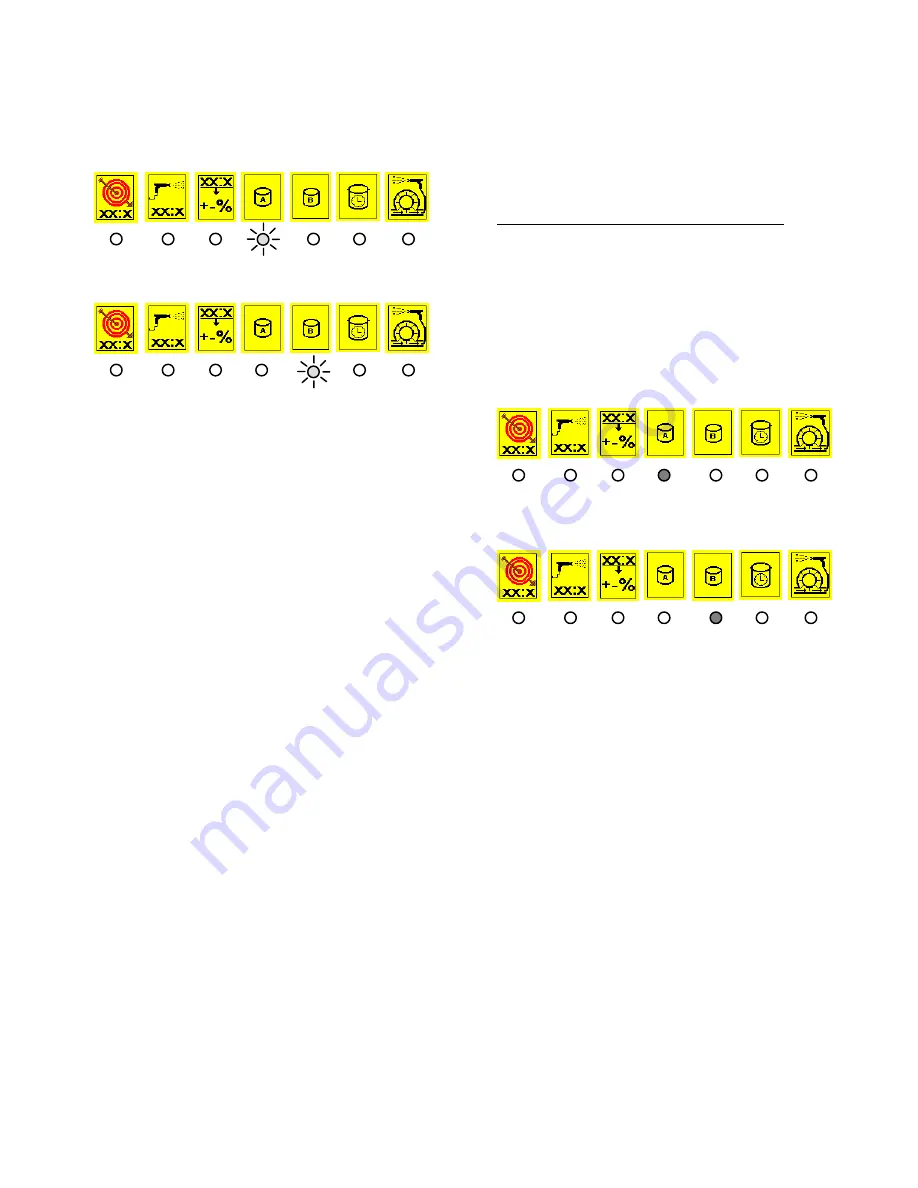
308783
29
Alarm Troubleshooting
Dose Time of Component A or B
Exceeded
Dose Time of Component A Exceeded
Dose Time of Component B Exceeded
When the air flow switch is activated (gun is triggered),
and it takes too long for a dose of A or B to load, the
Dose Time A or B Alarm will occur.
Maximum dose time is calculated by the controller.
Dose times are proportional to the ratio, with the
combined dose time of A and B equaling 60 seconds.
For example, at a 2.0:1 ratio, a Dose Time alarm will
occur if component A is not dispensed in 40 seconds
or component B is not dispensed in 20 seconds.
Common Causes for a Dose Time Alarm
The system is in the mix mode and the gun is only
partially triggered, allowing air but no fluid to pass
through the gun
The fluid flow rate becomes too low
The flow meter or cable fails
If a flow meter or cable fails, component A or B will
flow to the gun without the flow being read through the
meter pulses. The ProMix could keep the dispense
valve open indefinitely because the control will never
see the target value being reached. This condition
could cause the operator to spray pure component A
or B onto a part.
To prevent this from happening, the control will only
allow the component A or B valve to remain open for
the duration of the dose time. The dose time begins
when the flow switch detects air flow to the gun. The
alarm will alert the user if the dose time is exceeded.
Checking for a Flow Meter or Cable Failure
Follow the Ratio Check procedure on page 25. If the
meter or cable are failing, there will be a large differ-
ence between the amount of fluid dispensed and the
flow meter volume displayed by the control.
Overdose A or Overdose B
Overdose of Component A
Overdose of Component B
An overdose alarm occurs if the fluid continues to
dispense on the one side of the manifold after the
valves have opened on the other side of the manifold.
Common causes for an Overdose Alarm are:
Valve(s) packings or needle/seat are leaking
Ratio check valve is leaking
Flow meter fluctuations caused by pressure pulsa-
tions,
Slow actuation of the component A or B valves
Continued on the next page.






























